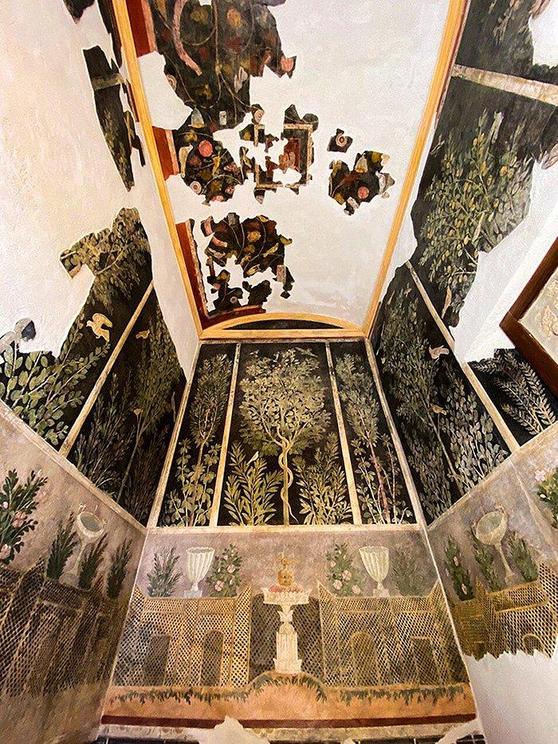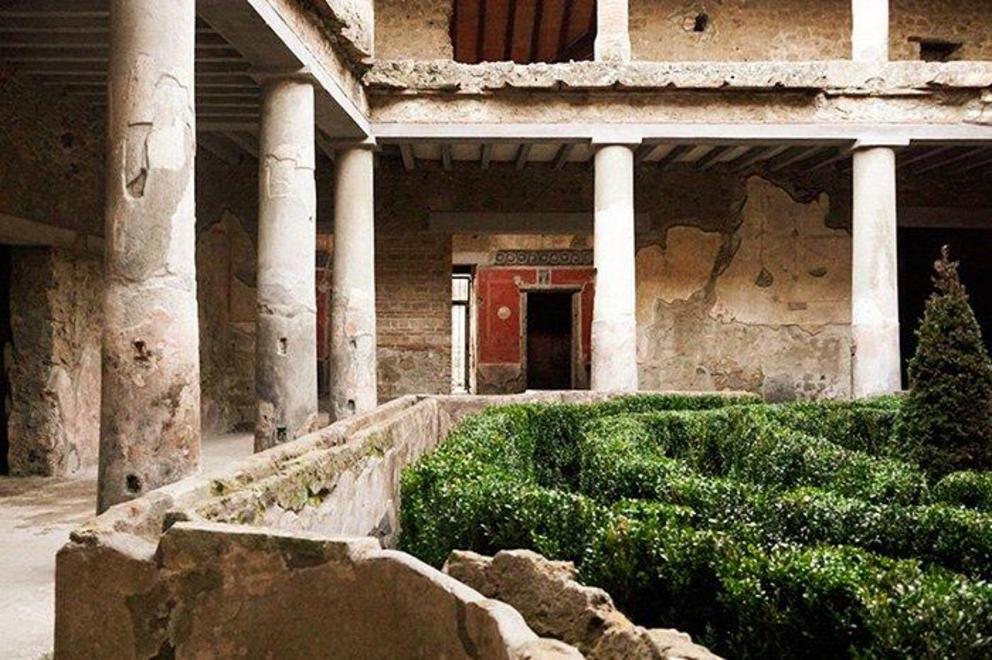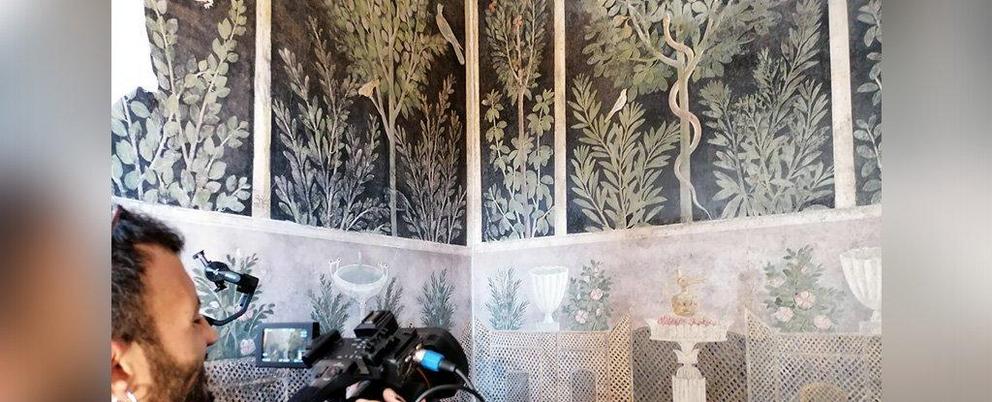Photos: a breathtaking Pompeii restoration was just revealed, with new treasures
The walls of the "House of Orchards".
Vivid frescoes and never-before-seen inscriptions were among the treasures unearthed in a massive years-long restoration of the world-famous archeological site Pompeii that came to a close on Tuesday.
The painstaking project saw an army of workers reinforce walls, repair collapsing structures and excavate untouched areas of the sprawling site, Italy's second most visited tourist destination after Rome's Colosseum.
New discoveries were made too, in areas of the ruins not yet explored by modern-day archaeologists at the site - frequently pillaged for jewels and artefacts over the centuries.
"When you excavate in Pompeii there are always surprises," the site's general director Massimo Osanna told reporters Tuesday.
 The "House of Orchards".
The "House of Orchards".
Archeologists discovered in October a vivid fresco depicting an armour-clad gladiator standing victorious as his wounded opponent gushes blood, painted in a tavern believed to have housed the fighters as well as prostitutes.
And in 2018, an inscription was uncovered that proves the city near Naples was destroyed after October 17, 79 AD, and not on August 24 as previously believed.
That might not be the end of fresh discoveries.
"It's certain that by carrying out other excavation projects in areas never explored before, the discoveries will be extraordinary," Osanna added.
 Fresco detail.
Fresco detail.
Kicked off in 2014, the restoration enlisted teams of archaeologists, architects, engineers, geologists and anthropologists and cost US$113 million (105 million euros), largely covered by the European Union.
The project was initiated after UNESCO warned in 2013 it could strip the site of its World Heritage status after a series of collapses blamed on lax maintenance and bad weather.
But the project has breathed new life into the historic site.
On Tuesday, workers carefully restored ancient frescoes, hues dulled by years of dirt and calcifications, and cleaned off centuries-old tile floors.
"You have to be careful not to take off too much," explained Aldo Guida, who was scratching at the surface of the oxblood walls of the 'House of Lovers', a two-storey home in the complex that was closed for repair after an earthquake in 1980.

"Little by little," he added, with a smile.
The giant eruption of Mount Vesuvius devastated the ancient Roman city of Pompeii nearly 2,000 years ago, covering everything in its path with volcanic ash.
That sediment helped to preserve many buildings almost in their original state, as well as the curled-up corpses of Vesuvius' victims.
Some of the site has been closed to the public during the restoration, including several "domus" - family residences for the upper classes - that have been since reopened to the public.
 The "House of Lovers".
The "House of Lovers".
The House of Orchards domus features intricately detailed frescoes of fruit trees and birds, while the House of the Ship Europa boasts a sketch of a large merchant ship.
Though the bulk of the restoration work is now complete, director Osanna said running repairs will never truly be over.
"It's a city in ruins," he said. "The attention we pay to it must never stop."

